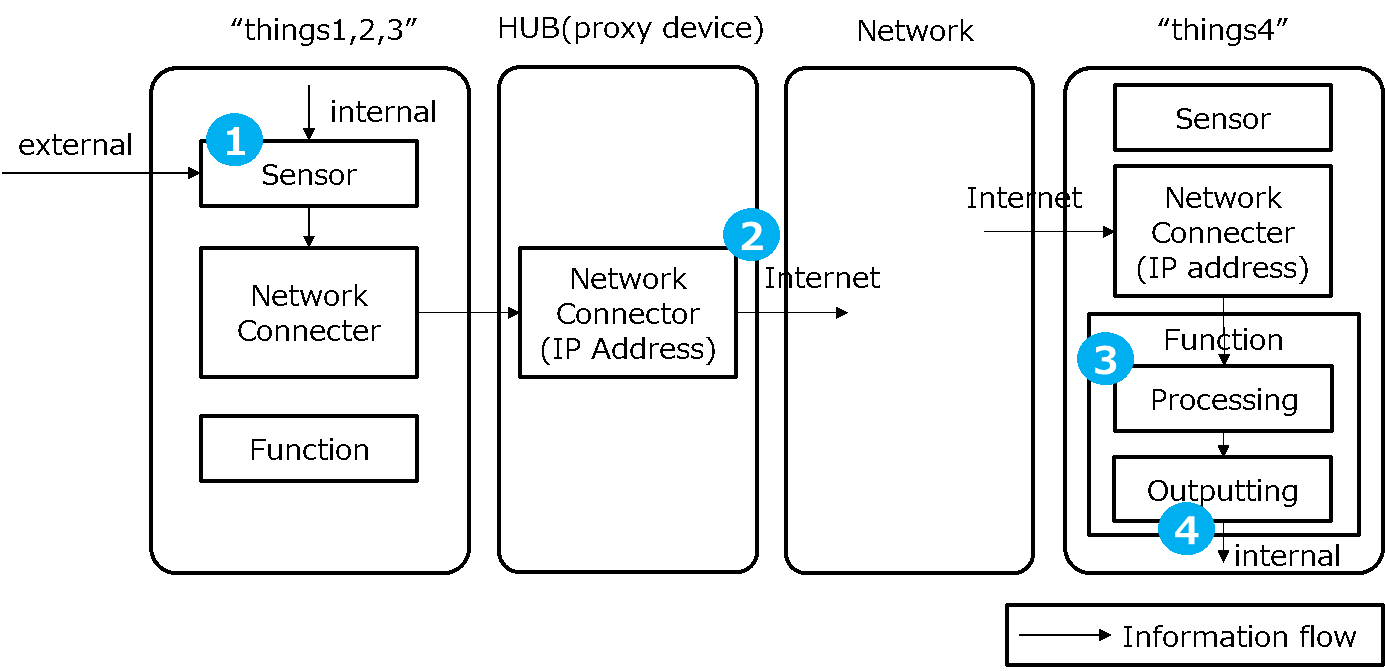CPC Definition - Subclass G16Y
This place covers:
IoT related aspects.
In this subclass, IoT is defined as a system that executes the following four processes.
- Physical objects (the "things") connected to a network sense and collect information from their internal state or external environment.
- The information sensed and collected by the objects is sent to a network space.
- The information is processed in the network space.
- The results obtained by information processing are fed back to the objects (the "things") or are output to other objects (other "things") or devices.
In other words, IoT is defined as a system consisted of three main components, namely: (a) physical objects ("things"), (b) network and (c) function, as defined in the Glossary.
See illustrative examples below.
Illustrative image of IoT with server

- Physical objects (the "things") sense and collect information.
- The objects have IP address and send the information to a server through internet.
- In the network space, the information is processed.
- The result of information processing is fed back to the objects (4-2) or output to other objects or other devices (4-1).
Illustrative image of IoT without server
- Physical objects (the "things") sense and collect information.
- The objects have IP address and send the information to other objects (other "things") through internet.
- The other objects process the information.
- The result of information processing is used by the other objects.
l Illustrative image of IoT with HUB
- Physical objects (the "things") sense and collect information.
- The objects don't have IP address and send the information to other objects (other "things") through internet via HUB.
- The other objects process the information.
- The result of information processing is used by the other objects.
In this place, the following terms or expressions are used with the meaning indicated:
Object | Objects (the "things") are embedded with technology enabling these objects to sense and collect information and connecting to network. Examples of such objects are: Objects, which perform specific functions with little or no electronic components, e.g. windows, doors or clothes; Objects, which include electronic components that perform specific functions independently from their functions for connecting to network, e.g. home electronic appliance and vehicles. On the other hand, generic computing and communicating devices, e.g. computer or laptop, on their own are not regarded as objects. However, in case that these devices are embedded in physical objects and enable the objects to sense and collect information and connect to network, then the devices can be regarded as a part of objects (the "things"). For example, smartphones, which are attached to vehicles to sense and deliver position data to a server, can be regarded as part of the objects. |
Thing | see "object" |
Function | Means processing information and outputting the results obtained by information processing. Processing information, here, includes:Complex information processing such as analyzing input information, e.g. data analysis.Complex information processing such as creating control information from input information.Processing information, here, doesn't include;Simple or less complex information processing such as only monitoring input information without data analysis, e.g. security camera system.Simple or less complex information processing such as only conveying control information to operate device, e.g. remote control system. |
Network | Means the communication system of interconnected objects which have their own IP addresses. A typical example of such network is the Internet. |
This place covers:
The construction, setting, control, maintenance or management of IoT systems per se.
In this place, the following terms or expressions are used with the meaning indicated:
Maintenance | The use of IoT for keeping an object condition to a certain level. |
Management | The use of IoT for controlling an object under some policies or in order to achieve objective. |